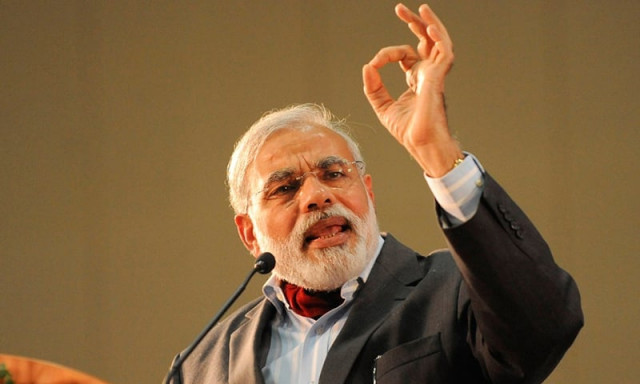Anti-British drive: Swadeshi movement, 110 years on
It gives a chance to see economic nationalism through the lens of history

PHOTO: AFP
In opposition to the partition, an anti-British movement was formed called the Swadeshi movement, which called for the removal of British rule from India and the improvement of economic conditions in the country. Predominantly, the movement involved economics for a greater nationalistic appeal. It used economic slogans for the larger goal of gaining independence.
This phenomenon, described as ‘economic nationalism’, has historically been used as a popular and powerful theory that is supported by wide and diverse constituencies looking to preserve their cultural heritage and expand their state’s international power. Similar was the case with the Swadeshi movement.
Predominantly, the Swadeshi movement was based on achieving two main objectives. Firstly, it was to exert pressure on the British government through boycotting their goods. Bengal formed one of the biggest markets for cotton goods produced by Manchester.
Secondly, it was regarded as essential for the development of the indigenous industry, which could not develop due to free competition from foreign countries. Although it was aimed at boosting India’s manufacturing sector, it gave impetus to the banking industry, resulting in an influx of joint stock banks.
Historically, banking in India can be traced back to 2000 BC with the presence of money lending in the Vedic period. Later, indigenous bankers expanded the scope of banking activity from money lending to financing trade but lost importance with the arrival of Europeans and East India Company.
Agency houses were set up in crucial financial centres such as Calcutta and Bombay, which did not indulge merely in banking activities but combined it with general trading. These agency houses were the precursors to joint stock banks in India.
The Agency House of Messrs Alexander and Co started the first joint stock bank of India, the Bank of Hindustan in 1770. Growth in banks was given an impetus by the Swadeshi movement following the partition of Bengal in 1905.
This is evident from the following statistic: the number of banks with a capital and reserve base of Rs5 lakh and above was nine in 1905, which doubled to 18 just before the onset of World War I in 1913.
Since Pakistan, India and Bangladesh share a common history, the Swadeshi movement thus served as a stepping stone in the foundation of banking in the entire South Asian region through the impetus given to joint stock banking.
Movement re-emerges
History has a pattern of repeating itself. After a passage of 110 years since the initiation of the Swadeshi movement, the current Indian government has again used economic slogans for attaining a greater nationalistic end.
The movement, which led to the rise of an important pillar of the Indian financial industry - joint stock banks, has reappeared in the form of the ‘hindutva’ slogan, which is using economic reform for attaining the greater nationalistic end.
Earlier this year, Prime Minister Narendra Modi held a summit in his native state of Gujarat and boosted a ‘Made in India’ campaign to develop the country as a hub for manufacturing.
At another Global Business Summit in New Delhi in January 2015, the prime minister said, “Economic development cannot take a nation forward on its own. We need a society which is cohesive. We have always debated about social unity, national unity and so on. We have never debated about financial unity; about bringing everyone to the financial system. This is one cause which both capitalists and socialists agree on.”
Promoting economic nationalism has historically been used as an effective tool to press for national interests, attaining economic objectives and defend autonomy in an increasingly globalised world.
Rawi Abdelal, Professor of International Management at Harvard Business School, defines economic nationalism as implementation of “economic policy that follows the national purpose and direction.”
To put more simply, economic nationalism prioritises national interests above private property and profit motives, making economic decisions with the intention of uniting and strengthening the nation-state. Taking the case of India, this tool is still being applied to date.
The writer is an economist and ex-central banker
Published in The Express Tribune, July 13th, 2015.
Like Business on Facebook, follow @TribuneBiz on Twitter to stay informed and join in the conversation.



















COMMENTS
Comments are moderated and generally will be posted if they are on-topic and not abusive.
For more information, please see our Comments FAQ